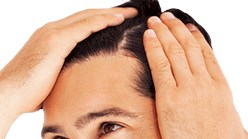Head Lice – now what am I supposed to do?

It never fails that at least once a day when I am performing a scalp exam during a body check I am commonly asked “are you looking for lice?” And although that is not my primary reason to section and separate the hair as I go across the head, I guess I am in fact looking for that as well as lesions on the scalp. The word “lice” instantly strikes fear into the hearts of patients and most instantly become itchy seconds after the word is heard.
The medical name for lice is pediculus humanus capitis. They are tiny insects that live on people’s heads. Adult lice are approximately the size of a sesame seed and even smaller are their eggs, called nits. Lice are parasites and survive by feeding off of human blood. They crawl up the length of the hair and attach their eggs to the base of the hair shaft. They move by crawling and do not hop or fly. They do not carry any diseases. They spread by close person-to-person contact (usually head to head) but can also possibly be passed by objects that come into contact with human hair like hats, scarves, coats, hair accessories, combs, brushes, and towels. Resting your head on a bed, pillow, couch, chair, or rug that someone with head lice used is another way to pick up head lice.
Getting head lice is in no way a reflection of poor hygiene of those that contract it. Anyone can get head lice but it is most common in school-aged children and those living in their households. Girls seem to get lice more commonly than boys as it may be because girls may have more head-to-head contact like slumber parties and doing each other’s hair.
Symptoms almost always include itching of the scalp and neck. Many will scratch so much that the scalp and sometimes the back of the neck can become red and irritated. Some feel a tickling or crawling sensation on the hair and scalp. Some see bugs crawling – looking like light-brown sesame seeds – on the hair, skin or clothing. Eggs (nits) can be seen almost glued to the hair. The nits are very small – about the size of a pinhead – and are yellow, brown, or tan. If the eggs have hatched you may see clear shells. The infestation can also cause lymph nodes to become swollen in the neck.
Diagnosis is usually made by seeing a louse or nit. They are very small and quick-moving so a magnifying glass may be needed. A fine-toothed comb may also be used to find lice or nits.
Treatments for head lice are available over-the-counter and by prescription. They are in the form of shampoos, creams, and lotions. The over-the-counter treatments are effective and widely available. If you are pregnant or nursing or want to treat a young child, guidance from a medical provider is necessary. In order to have a successful outcome the directions for the treatment need to be e followed exactly as directed and after treatment, the hair should be checked for lice and nits. Use of a fine-toothed comb (aka a nit comb) every 2-3 days after treatment is essential for continued removal on the dead lice and nits remaining on the hair. Combing should be continued over the next couple of weeks to ensure eradication of the lice. All household members should be checked and treated if they in fact to are infected.
Treatment of the soft surfaces in the person’s environment should also be treated and all items like clothing, towels, and bedding should be washed in hot water. Combs and brushes can be cleaned by soaking in hot water for at least 5-10 minutes and if any items cannot be washed then they should be placed in a plastic bag and sealed for 2 weeks.
…And now I feel I have to apologize for making your scalp feel inadvertently itchy..!!
